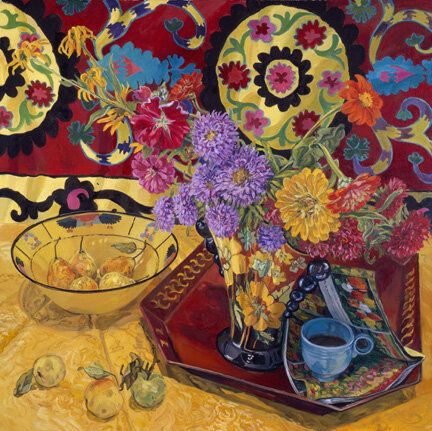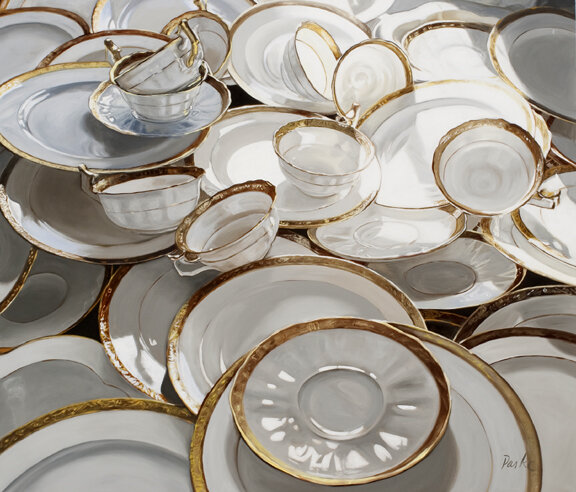THE GENEROUS JANET FISH
You know when there is a painter you really love, where everything about their work excites you and you go in the studio and spend all your time trying to avoid that person's work? Well, for a long time I felt that way about Janet Fish, especially when I first started painting representationally. One day I decided that the only way to find out what my painting was about was to try to make the most Fishesque paintings that I could. So, first, just in case you are not familiar, let me show you her work.
Janet Fish has two studios, one in New York and one in Vermont. Several years ago she built a new studio in Vermont, which made it possible for her to have a painting space that faced east and one that faced west. As I understand it, during the morning light she paints in the east studio and in the afternoon she paints in the west studio. She works almost entirely from life, and not only does she chase the morning and afternoon light, she also chases the light around her canvas, painting each section when the light on that item looks best. So, the light in her paintings do not represent one moment, but time passing.
She takes a long time to set up her still lifes. Her studio is filled with props that she organizes chromatically on bookshelves.
Fish is known for her highly chromatic paintings, her reflective surfaces, her painting of glass and other transparent substances such as plastic, as well as, a space fully populated with objects. There is frequently an underlying reference or narrative that is personal. She sometimes includes friends and neighbors in her paintings, and even many of the objects are things that her friends lend her. But her paintings are also about formal issues of color, light and composition.
When I set about to do a Fishesque painting, I put together objects that I saw in her paintings, such as shells, then things that reflected light, such as fabric that changes its sheen as the light changes; ribbons; anything that sparkled, was transparent or translucent. This is what I came up with:
So, what did I learn? I tend not to work with high key colors. I am more interested in the light of a particular moment. I like to try to paint the unpaintable -- things that glitter, shine and reflect light; things that are transparent or translucent. For me, I think that light is a stronger draw than color. With Janet Fish as my guide, I learned to be fearless in my choice of objects and to see the objects for the visual qualities they brought to the painting, not for their "meaning". The lessons of these paintings have served me well. I have been able to bring more of me to my new still lifes and less of Janet. And as I was able to distinguish what it was about her paintings that really resonated with me, I was able to distill that which was mine and find more of that in the world to paint.
One final note: I have a friend, Lynn, who is a very close friend of Janet's and one day she asked me if I would like to go to our favorite import store in Rutland with Janet. Lynn and I had been often to this store and one time I bought a pair of Indonesian dolls that seemed very Fishesque to me. I tried painting them, but they resisted me. Something about them was too "Fishy". When we were at the store I found another set of these dolls and I showed them to Janet. I told her that I thought she might like them. She did.











